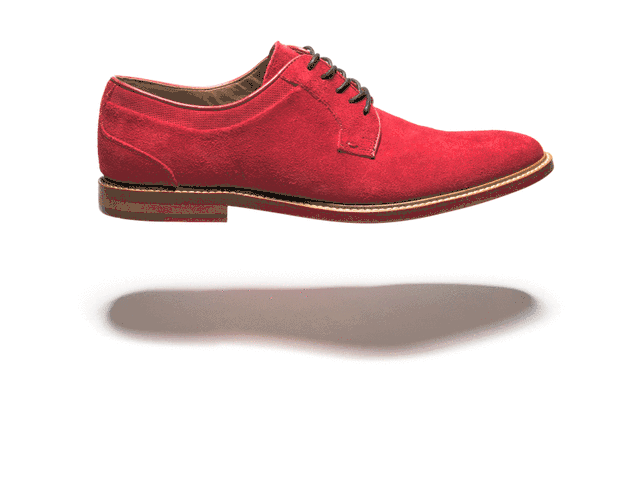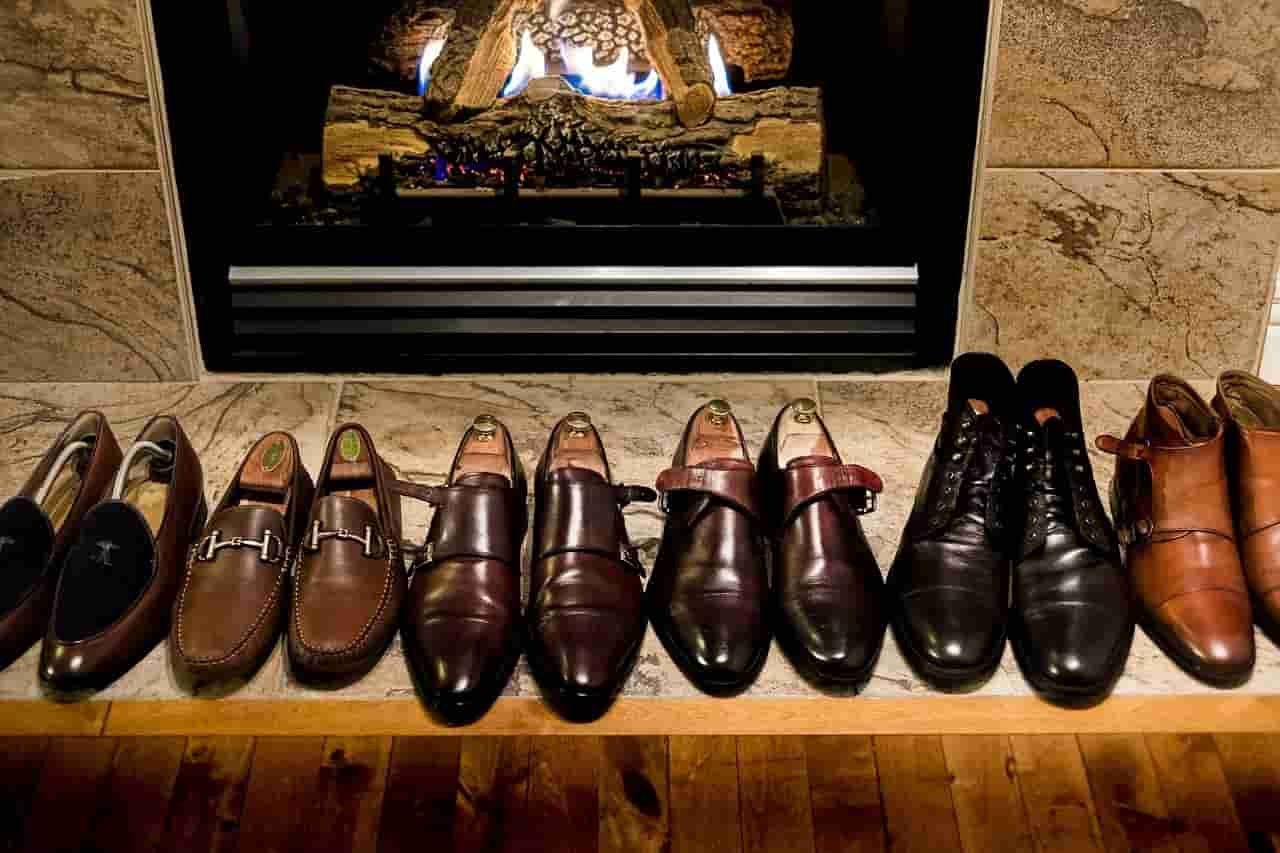Shoes for Men, Different Types of Styles and Models
This article is about the different models of men’s shoes or all models and types of men’s shoes. What is the difference shoes for men between a pair of brogues and a pair of derbies? Chukka boots or Balmoral ankle boots: which shoes for men to favor for a strong instep?
What colors to favor to accompany city pants or casual-style chinos?
Here’s a guide to finding the perfect men’s shoe model for your priorities.
Among the low shoes for men there is a close match between derbies and brogues.
Want to know the difference between an oxford and a derby? The following should interest you.
OXFORD : THE TIMELESS MEN’S SHOE MODEL
The men’s brogue is a leather shoe with laces that go directly into the upper.
Its V-shaped opening is sometimes incompatible with a strong instep.
An alternative to 19th century ankle boots and formal shoes, the brogue was originally synonymous with comfort.
Nowadays, the brogue is considered to be the city shoe par excellence. Brogue shoes for men, from the Gaelic word bróg meaning “shoe,” refers to any low-heeled shoe, loafer, or boot with hole perforations on the leather uppers (top of the shoe), known as broguing, and serrated edges alongside the seam of the shoe.
Brogue is a kind of ornamentation created by small perforations or holes. Any shoe with broguing is called a brogue, even if it’s an oxford. Hence, brogues and oxfords are not mutually exclusive.

Sobebunny. Wikimedia Commons (CC BY-SA 3.0) File: Oxford full brogue spectator shoes
DERBY A MODEL OF SHOE FOR MEN COMBINING STYLE AND COMFORT
Combination of style and comfort, derbies are men’s town shoes recognizable by their guarantors allowing a total opening of the footwear.
Less formal than the brogue, the derby, which dates back to the 19th century, features a system of laces that make it easy to adjust the shoe to the most pronounced instep.
The hunting and half-hunting derbies: two iconic models for men
Among the iconic models, the hunting and half-hunting derbies are identified by their platform and their split toe.
To differentiate a pair of hunting derbies from a pair of half-hunting derbies, you have to look at the number of pieces of leather making up the uppers of the shoe.

For hunting derbies, only one piece of leather is necessary against two pieces of leather for half-hunting derbies.
Buck derbies and monk derbies: two remarkable models
The white suede derbies mounted on a red rubber sole are called buck derbies. Monk derbies or monk shoes are low shoes whose laces are replaced by buckles.
Less elegant than an oxford, this model strikes a balance between formal and casual style.
Men’s moccasins and boat shoes
The oldest model is 5,500 years old.
Nowadays, moccasins refer to leather shoes with a platform, no laces (and sometimes) no hard toe, mostly decorated with a leather bar or tassels.
Slippers are a variation halfway between moccasins and slippers.

Moccasin is often associated with casualness and this is quite normal since it was originally this idea that guided the way it is designed:
- with some exceptions, moccasins have no laces which makes it easier to put on
- here it’s not a style game: moccasins always have a tray
- in some cases there is no hard end for less rigidity
- some brands offer unlined moccasins to make the shoe even lighter.
The moccasins have their own decorations that you don’t see on other models:
- a leather bar
- decorative tassels
Nowadays, moccasins are no longer exclusively leisure shoes and can be made with a stronger construction and quality leathers in order to have a much longer lifespan.
They can perform in variations that we have already presented earlier in this article: one-cut / wholecut, Prince Albert, etc. Slippers are a variation halfway between moccasins and slippers.
Read also: Tips For Choosing Christmas Gifts for Children | What to choose for them?
BOAT shoes (deck shoe)
Boat shoes differ from moccasins by their sport line combining oily leather design, white sole and laces surrounding the shoe.
These shoes are so called because they were originally designed for sailors (doesn’t that make sense?).
They look like moccasins except that they have laces which also go all the way around the shoe and will, more often than not, be made with oily leather to resist water. They are, in general, built with a white sole.
Boots and leather ankle boots for men
In the big family of men’s shoes, did you ask for rising models? At this point, let’s explore men’s boots and ankle boots.
THE DIFFERENT MODELS OF LACE-UP BOOTS FOR MEN
Among the high top lace-up shoes are the balmoral boots. Built like an Oxford shoe, this model has guarantees attached to the upper part of the shoe. When the guarantors are free, we speak of high ankle boots or derbies offering multiple variations ranging from desert boots to chukka boots, including combat boots or work boots.
The balmoral ankle boot
I have already presented the low version to you while the original version of this model is actually the high version. So we have a shoe that goes above the ankle and closed with laces (from 7 to 9 eyelets – with or without hooks – in general). The guarantors are constructed in the same way as a richelieu (therefore imprisoned under the vamp).
The ankle boot (or rising derby)
Concretely, it is the same as the Balmoral except that it is built in the same way as a derby (the guarantors are free). This gives it a slightly less formal aspect and above all allows much more specific interpretations: combat boots, work, boots, etc.
Button boots
Here again we have a boot similar to the balmoral. The difference (and it’s quite visible) is that it closes with buttons. This is a model that is almost impossible to find in ready-to-wear but some shoemakers make tailor-made.
In any case, it is a complicated shoe to put on (the patronage is planned as tightly as possible because the buttons do not offer any tightening range like the laces). So much so that you often have to use a button puller to attach it.
The chukka boots
They are closed with laces (usually 2 to 3 eyelets) and the guards are built like a derby. They have very few visible seams which allows them, depending on the shape and the materials used, to be adapted to both formal and casual situations (some brands offer one-cut Chukka or with different suede leather or shiny looks).

MEN’S LEATHER ANKLE BOOTS WITHOUT LACES
Less tall than boots, men’s leather ankle boots stop a few inches above the ankle. Unlike boots, they do not have laces. Jodhpur boots have a buckle strap around the ankle. Chelsea boots have elastic side panels that make them very easy to put on and take off. Zippered ankle boots differ from Chelsea boots by their opening zipped on the inside.
The jodhpur boot
You can recognize a Jodhpur shoes for men – which originally was designed for riding – by the strap that is used to tighten the shoe at the ankle.
Chelsea boots
Its particularity is to have elastic bands located on the sides. They allow them to be put on and taken off very easily. It is a very popular model (popularized, among others, by the Beatles in the 60s) and, again, many brands offer their version of the Chelsea boots shoes for men with the inevitably, more or less success for a model seen and reviewed!
The zipper boot
Similar in construction to a Chelsea boots with the difference that the elastics are replaced, on the inside, by a zipper. So we’ve just gone through all the different shoe models.
Type of men’s shoes: perforations (holes) and front part (toe)
In the first part the models presented had design / patronage differences:
- lacing system;
- construction;
- low or high;
- etc.
What we will tell you about here applies to all models shown without distinction. You see them everywhere:
- perforations (holes)
- pieces of different colors
- bits with funny shapes
- etc.
However, as we will see, some of these finishes go so far as to give their name to a model. But don’t forget that they can be applied to all types of shoes: brogue, derby, moccasin, etc. These are not manufacturing differences as we have seen before. These are purely aesthetic choices! We could therefore, for example, speak of a derby with a straight end or an oxford with a flowered toe.
The different front part
As the name suggests, we’re interested in the front of your shoes here. Since this is a part that is not subject to the constraints of walking, it can easily be decorated.
Beyond the visual, the presence of a tip tends to cut the shape of the shoe and therefore to avoid having too thin a shoe. Here are the different tips you can find:
1. PLAIN tip
No frills here: the front of your shoe is one-piece and unadorned. For example, you will find a plain end on our Chukka.
2. STRAIGHT END / FILLED END / PERFORATED STRAIGHT END
In this case we will add a piece of leather to form the end. Depending on the finish applied to this piece, we can end up with:
- a stretch when cut “straight”
- a folded end when the edge of this piece is folded back on itself
The stretch can be underlined with a perforation line (just a line, not a pattern as for a flowered end), this is called a “perforated stretch”. Logical no?
3. THE GOLF FRONT TIP
As for the straight end, a piece of leather is added to form the end. But this time the shape is more complex and extends towards the back of the shoe. For example, we decided to put a golf tip on our Brogue model.
4. THE LONG-WING GOLF FRONT TIP
Here we are in the presence of a golf tip except that its branches go all the way around the shoe and meet at the rear. We use this type of tip on our Derby Long Wing:
We have just seen that to make a piece you have to add a piece of leather. In some cases, this makes it possible to play on a contrast of material and / or colors. You can also use a tip to just “break” the shape. This is to avoid the impression of “pointy shoes”.
But it is not compulsory to add a piece of leather to the patronage of the shoe. We can very well simulate an end by:
- a seam that pinches the leather
- a line of perforations
- a simple seam
5. THE FLOWERED TIP
We decorate the end with a pattern made with perforations of different sizes. We can “flower a piece” whether it is plain, straight, golf or simulated!
Sources: PinterPandai, Man of Many, The Adult Man, The Trend Spotter
Photo credit (main photo): AntoineLanz / Pixabay
Unraveling the Colors of Astronaut Spacesuits: White, Orange and Blue Significance



